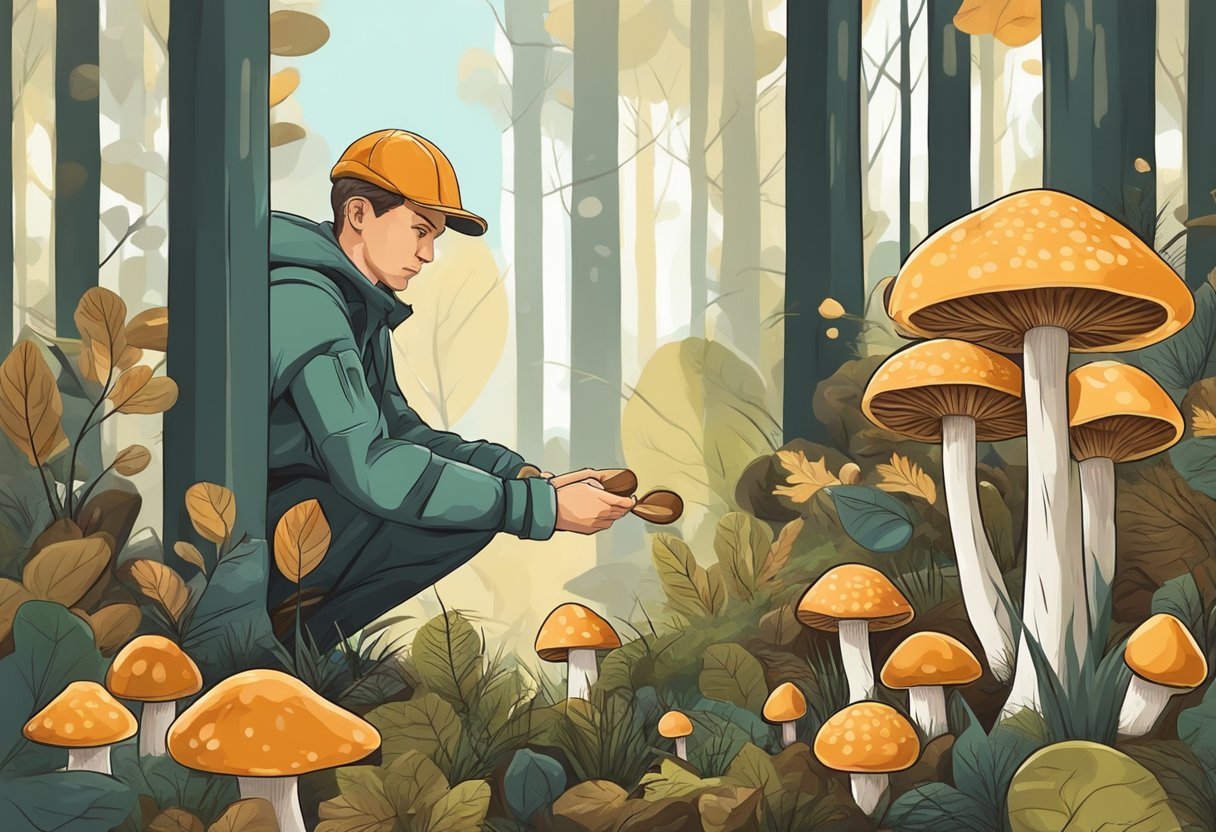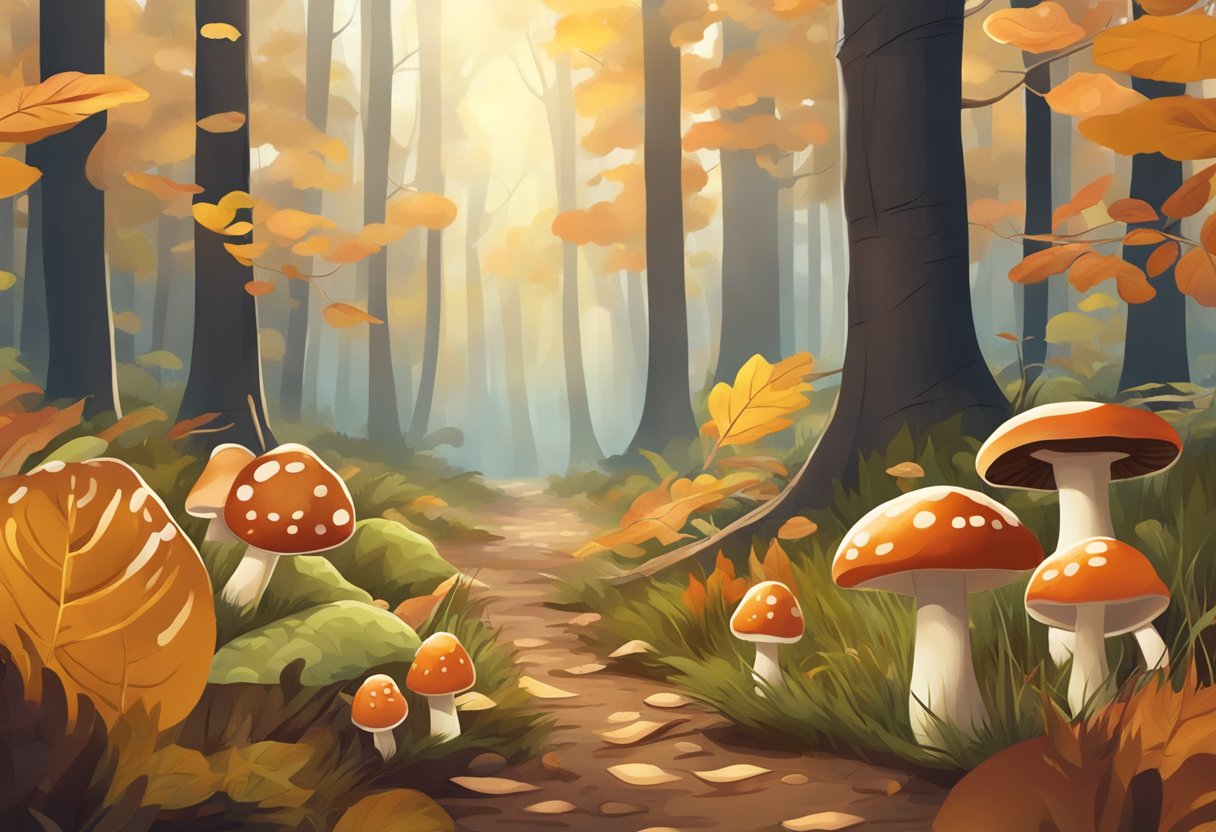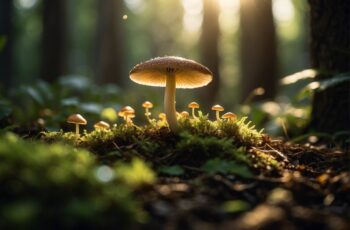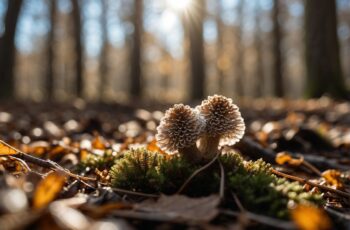Mushroom hunting, also known as foraging, is a popular activity for those who appreciate the diversity and taste of wild edible mushrooms. Every year, numerous species of edible mushrooms grow in various regions, offering an opportunity to enjoy a natural and satisfying culinary experience. Understanding the best locations, proper timing, and appropriate safety guidelines is crucial to making the most of your mushroom picking adventures.

Various regions offer unique environments that cater to different types of edible mushrooms, with some species being more prevalent or highly sought after than others. The ideal time for mushroom hunting is during spring and fall when the weather is damp and mild. For example, morels are often found from late March through June in areas with moisture and good soil content. To ensure a safe and successful foraging experience, it’s essential to be familiar with local regulations and have a clear understanding of the different mushroom species to avoid potentially toxic lookalikes.
Key Takeaways
- Familiarize yourself with species and seasons for successful mushroom hunting
- Abide by safety and regulation guidelines to ensure a positive foraging experience
- Consider joining organized mushroom foraging trips or workshops to gain knowledge and enhance your skills
Understanding Species and Seasons

Commonly Foraged Mushrooms
Understanding the variety of edible fungi is crucial for enthusiasts looking to embark on a mushroom foraging adventure. Tree mushrooms are abundant and encompass a diverse range of species growing on bark and tree trunks1. Popular edible mushrooms include chanterelles and porcini. Chanterelles are common in the pacific northwest, particularly in Oregon, where they are highly sought after during their peak season2.
Mushroom Seasons
Equally important to identifying edible mushrooms is to familiarize oneself with the various seasons when they can be found. A mushroom season chart can facilitate finding the best mushrooms at optimal times throughout the year. The flavors and textures of mushrooms can be paired with a variety of proteins and dishes, making them an excellent addition to any meal3.
The peak season for chanterelles in Oregon, for instance, is a much-anticipated time for both mushroom hunters and food enthusiasts2. A comprehensive guide, such as The Complete Mushroom Hunter, can offer valuable knowledge on finding and identifying wild mushrooms throughout the various seasons4. Local habitat and climate conditions also play a significant role in determining mushroom growth, so being aware of these factors will enhance the overall foraging experience.
Footnotes
Top Locations for Mushroom Picking

Mushroom picking is an exciting and rewarding pastime that combines a love for nature with the thrill of discovery. In this section, we will explore top locations for mushroom picking in the United States, as well as the forests and habitats where you can find these delectable treasures.
Mushroom Picking in the United States
In the United States, mushroom picking enthusiasts can find a variety of species in different regions. Morel mushrooms, for example, can be found in Virginia and Oregon, where forested areas offer rich habitats for these prized culinary treasures. Meanwhile, in Indiana, mushroom hunters can explore the state’s forests, parks, and even private lands for their next successful foraging adventure.
Forests and Habitats
To find mushrooms, it is essential to understand the specific habitats and forests in which they thrive. Different types of mushrooms will grow in various regions, so it is crucial to research local ecosystems and seasonal factors in order to locate prime mushroom hunting spots.
In the Pacific Northwest, for example, people can hunt for mushrooms in diverse environments, from high-elevation ridgetops and coastal forests to mountain meadows and dense timber stands. The Pacific Northwest is particularly well-known among mushroom enthusiasts for its abundance of chanterelles, porcini, and morels.
While the Pacific Northwest may be a hot spot for mushroom picking, other regions across the United States offer their own unique habitats and opportunities for successful foraging. Whether you’re a seasoned mycophile or just beginning your mushroom hunting journey, understanding local forests and ecosystems will increase your chances of finding these delicious and versatile fungi.
Remember, when embarking on a mushroom picking adventure, always be cautious, and research the local regulations to ensure you are foraging safely and legally. Happy hunting!
Safety and Regulation Guidelines
Regulating Mushroom Foraging
In order to ensure a safe and enjoyable mushroom foraging experience, various states have implemented specific regulations. For instance, in Oklahoma, mushroom hunters are required to follow certain rules which can be found in their official guidelines. It is essential to understand the laws and regulations for the particular region you are planning to forage mushrooms.
Safety Procedures
Safety is a crucial aspect when it comes to mushroom picking. It is essential to familiarize yourself with the types of mushrooms present in your area and have a good understanding of which ones are edible and which ones are not. Carrying a field guide with clear descriptions and photographs may help to identify edible mushrooms easier.
- Know the harmful species: Some mushrooms, such as the infamous Death Cap, can be extremely toxic when ingested. It is crucial to be cautious and avoid picking mushrooms you are unsure about.
- Never consume wild mushrooms without proper identification: Accurately identifying mushrooms can be challenging even for experienced foragers. When in doubt, it’s better to leave a mushroom behind than to risk consuming a potentially toxic species.
- Be aware of potential allergens: Even edible mushrooms can sometimes trigger allergic reactions in sensitive individuals. If you have never consumed a particular species before, try a small amount at first to gauge your body’s reaction.
- Pay attention to environmental factors: Mushrooms absorb nutrients and toxins from their surroundings. For the safety of your pets, it’s essential to ensure there are no harmful substances present in the area, such as pesticides or toxic mushrooms that could be harmful to your dogs.
By following proper safety procedures and adhering to relevant regulations, you can make your mushroom foraging experience both enjoyable and safe.
Mushroom Foraging Trips and Workshops
Mushroom hunting is a growing hobby that attracts enthusiasts who enjoy exploring the outdoors and learning about fungi. Many groups and classes are available to teach the art of foraging while ensuring the identification and harvesting of wild mushrooms is done safely.
Joining a Foraging Group
People who are new to mushroom foraging or simply wanting to share their interest can benefit from joining a foraging group. These groups typically organize trips to various locations where members can learn from each other, share experiences, and gather wild mushrooms. Connecting with other enthusiasts helps participants identify edible mushrooms and avoid poisonous species. Moreover, forging relationships with like-minded individuals can enhance the enjoyment of the activity.
Foraging Classes and Gift Certificates
For those who prefer a more structured learning experience, taking a mushroom foraging class helps build the skills and knowledge necessary for safe and successful foraging. An experienced instructor can provide guidance on the identification and harvesting of wild mushrooms while maintaining a focus on safety and environmental stewardship.
A mushroom foraging course can be an enjoyable and educational gift for fungi enthusiasts. Many organizations offer gift certificates for such courses, allowing recipients to choose a convenient time and location for their lessons. A thoughtful gift of this nature provides a unique, memorable experience for those interested in mushroom hunting.
In conclusion, both foraging groups and structured classes provide excellent opportunities for learning and growth within the mushroom hunting community. Exploring available options can introduce novices to the fascinating world of fungi, while seasoned foragers can further expand their knowledge and skills. Ultimately, whether participating in a group or a class, attendees can expect a rewarding experience with a focus on safety, learning, and environmental appreciation. Consider investing in a mushroom-themed gift for the fungi enthusiast in your life.
Preparation and Use of Edible Mushrooms
Edible mushrooms are a culinary delight, offering unique flavors and textures to a variety of dishes. It is essential to know how to properly select, prepare, and store these fungi to maximize their taste and shelf life.
When selecting fresh mushrooms like morel mushrooms, look for specimens with a firm texture, smooth surface, and a pleasant earthy aroma. Avoid mushrooms that appear slimy, discolored, or have an off smell, as these may be past their prime or inedible.
Before cooking, clean the mushrooms gently with a damp cloth or soft brush to remove any dirt or debris. It is crucial not to soak mushrooms in water, as they readily absorb moisture, which can affect their flavor and texture. Remember that morels have a unique taste that is difficult to describe, making them even more delightful to experiment with in the kitchen.
To prepare edible mushrooms, such as morels, you can sauté, grill, or roast them. Sautéing in a bit of butter or oil with some garlic and herbs brings out their flavors. Grilling mushrooms with a marinade can add a smoky, charred taste, while roasting with a drizzle of olive oil and a sprinkling of salt and pepper will give them a tender, golden-brown finish.
Once you’ve enjoyed your edible mushrooms, proper storage is key to maintaining their freshness. Morel mushrooms, for example, can be stored using specific techniques to keep them flavorful for a more extended period. These methods may include placing them on a tray covered with a damp cloth in the refrigerator or preserving them by drying or freezing.
In conclusion, understanding the preparation and use of edible mushrooms like morels can enhance your culinary experience and enable you to make the most out of these delicacies. Proper selection, cleaning, cooking, and storage are essential steps to ensure a delicious and safe mushroom-eating experience.
Frequently Asked Questions

What are the best locations for mushroom foraging in Michigan?
Michigan offers a diverse landscape suitable for mushroom foraging. Some popular locations for mushroom hunting include state parks, forests, and trails. However, it’s essential to familiarize yourself with the specific mushroom species in your area and adhere to local regulations when foraging.
When is prime time for morel hunting in 2023?
Morel mushrooms tend to be most abundant in the springtime, between mid-April and mid-June. The exact timing may vary depending on local weather conditions and elevation. It is advisable to monitor local reports and discussion boards for information on morel sightings in Michigan during 2023.
Which guided morel mushroom hunts are available?
Guided morel mushroom hunts are an excellent option for those looking to learn more about mushroom foraging from experienced guides. Local nature centers and conservation organizations may organize group excursions for morel hunts, especially during peak seasons. It is recommended to search online for upcoming events or contact these organizations directly for information on guided hunts in your area.
Is there a specific mushroom calendar to follow in Michigan?
While there is no specific mushroom calendar for Michigan, morel hunters can generally rely on the warmer spring months for foraging opportunities. Local weather patterns, elevation, and previous mushroom sightings can further help determine optimal foraging times in specific areas. Beginners are advised to monitor experienced foragers’ discussions and follow local news for updates on mushroom early sightings.
Where can I purchase Michigan morels?
Fresh morels can be found at farmer’s markets and specialty stores in Michigan, particularly during the spring harvest season. Alternatively, you can also purchase them online from reputable sellers who source their mushrooms locally. Prices may vary depending on demand and availability.
What’s the largest morel find in Michigan?
Largest morel finds can vary greatly depending on the season and location. However, Michigan has been known to produce impressive morel mushrooms, with some specimens measuring several inches in height. Sharing your finds with local foraging groups and participating in friendly competitions can enhance your mushroom hunting experience, and potentially lead to discovering the largest morels in your area.


